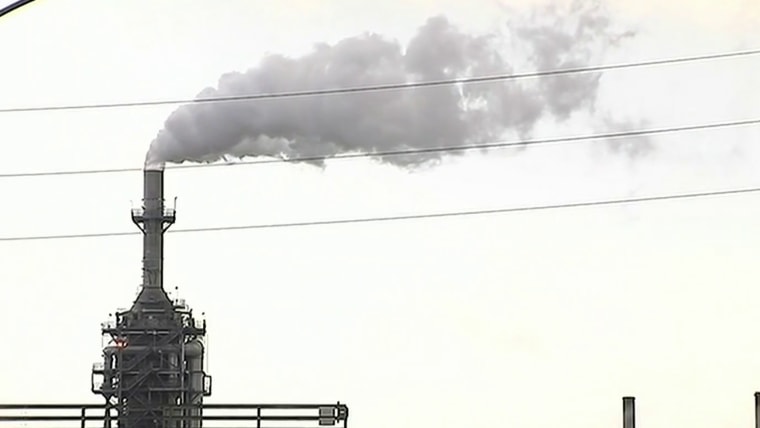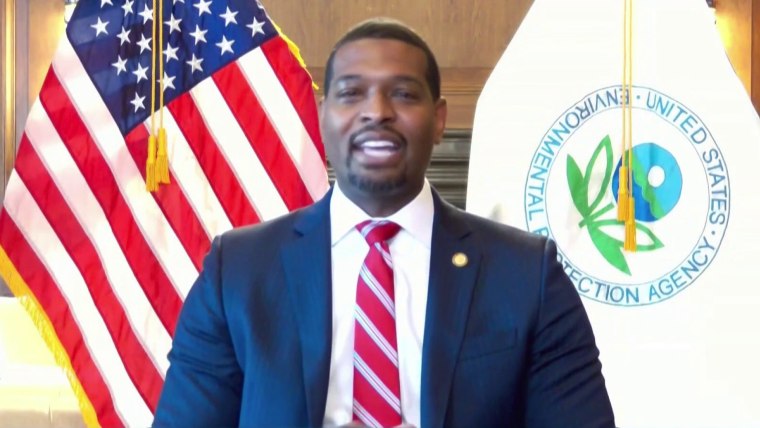Dueling sentiments outlined the day for local weather activists, traders and attorneys as they reacted to the Supreme Courtroom’s determination Thursday in West Virginia v. EPA, which eradicated among the Environmental Safety Company’s powers to manage carbon air pollution underneath the Clear Air Act.
On one hand, many stated they’re gutted by the Supreme Courtroom’s ruling. On the opposite, some feared the courtroom would deal a extra deadly blow to the Clear Air Act — and so they suppose the choice merely shifts the venue for the local weather combat.
Local weather attorneys stated the ruling was narrower than the worst-case choices that they had feared and that it left authorized openings for federal companies to manage carbon air pollution utilizing different components of the legislation.
“EPA nonetheless has instruments to work with. EPA remains to be going to do the work of regulating greenhouse fuel emissions from energy vegetation,” stated Jack Lienke, a coverage adviser for the Institute for Coverage Integrity at NYU legislation. “It’s irritating … however the sport isn’t over.”
The ruling will nearly assuredly make U.S. local weather targets tougher to succeed in whereas shifting local weather consideration to the states, native governments and traders attempting to capitalize on the falling prices of unpolluted vitality. Whereas the federal authorities’s credibility may take a success in worldwide local weather talks, momentum towards low-carbon energy may now not hinge on federal regulation, they argued.
“Our governors are fired up,” stated Casey Katims, the chief director of the U.S. Local weather Alliance, a bipartisan coalition of state leaders who need to cut back emissions.
Katims famous that within the time it took for the EPA regulation to succeed in the nation’s highest courtroom, dozens of states have handed landmark clear vitality payments.
The Supreme Courtroom’s determination centered on the Obama administration’s Clear Energy Plan and whether or not the EPA had the authority underneath the Clear Air Act to make utilities shift away from coal-fired energy vegetation and transfer to producing energy with wind, photo voltaic and different cleaner sources of vitality.
The courtroom stated the EPA couldn’t require that shift, however it left different choices intact for the EPA to manage energy vegetation underneath the Clear Air Act.
“The company will ultimately suggest a brand new rule,” Lienke stated, suggesting that such a rule may require coal vegetation to undertake carbon sequestration know-how, co-fire with pure fuel or enhance effectivity, which might all pressure emissions reductions. “We can have additional fights about these choices.”
In reaching its determination, the courtroom’s majority relied upon new authorized reasoning that environmental attorneys fear has paved new avenues to limit the executive energy of federal companies.
“The best way that is written, and the invocation of the main questions doctrine, is a giant shadow over environmental, public well being and security legislation,” Jason Rylander, a senior legal professional on the Middle for Organic Variety, stated, including that “selections like this have a chilling impact” on companies like EPA as they attempt to enact guidelines and coverage. (The Main Questions Doctrine offers with simply how a lot authority regulatory companies have.)
Rylander fears the brand new doctrine may mood EPA ambitions when “it’s not a time to be timid about taking local weather motion.”
With fewer choices on the federal stage and new uncertainty over how the Supreme Courtroom will obtain rules, some states and native governments will look to choose up the slack on local weather.
“States’ authority to curb greenhouse fuel emissions has not modified,” Katims stated, including that his group would push for extra states to undertake measures like renewable vitality requirements and zero-carbon electrical energy targets and to create carbon markets that cap energy plant emissions.
A few of that work is already happening on the metropolis stage, stated Kate Wright, the chief director of Local weather Mayors, a bipartisan group of practically 500 mayors throughout 48 states. She pointed to locations reminiscent of Los Angeles, which is closing city-owned coal and fossil gas energy vegetation, and Houston, which is powering municipal services with clear and renewable vitality, as cities the place native officers are taking the result in handle the local weather disaster.
However a lot of these efforts are restricted by jurisdiction and funding, Wright stated. The Supreme Courtroom’s determination, which hamstrings local weather motion on the federal stage, is a major blow.
“We are able to’t simply print cash,” she stated. “We actually are going to want the regulatory energy of the federal authorities. We’re going to want the technical help, and we’re going to want the funding.”
Former Vice President Al Gore equally stated the U.S. might want to discover different choices to combat international warming.
“We have to see state and native governments redouble their efforts to cut back emissions, we have to see the personal sector step up and match their local weather pledges with motion, and most significantly, we should name on Congress to move complete local weather laws,” Gore stated in an announcement.
Former presidential candidate Tom Steyer, an investor and a co-executive chair of Provoke Local weather Options, stated in an interview that the ruling “places much more onus” on personal companies and traders to fund tasks that can ship renewable vitality at scale.
“We’re actually on the clock,” Steyer stated, including that wind and photo voltaic are the most affordable types of electrical energy era. “Within the subsequent 10 years, it’s not about investing in new know-how. It’s about enhancing the applied sciences now we have and deploying them.”
The Supreme’s Courtroom determination is prone to put the Biden administration’s 2030 local weather targets even additional out of attain, stated Wright, of Local weather Mayors.
As a part of the landmark Paris Settlement, a world pact that goals to cut back greenhouse fuel emissions to avert the worst results of local weather change, the U.S. pledged to chop its emissions in half by 2030. The goal might be in jeopardy with out aggressive local weather motion from cities, states and the federal authorities, Wright stated.
The courtroom’s ruling may additionally injury America’s credibility in international local weather negotiations, particularly with companions which have stronger local weather rules, just like the European Union.
“It makes it tougher for the USA — the federal government department — to steer internationally on local weather if we will’t ship on our local weather promise by 2030,” Steyer stated.
Vickie Patton, the overall counsel for the Environmental Protection Fund, which was a celebration to the case, stated that the Supreme Courtroom’s determination was “damaging” however that the EPA nonetheless has different methods to regulate dangerous air pollution, together with addressing methane emissions from the oil and fuel trade and tailpipe emissions from passenger automobiles, vans and buses. Such instruments will turn into much more necessary, she stated.
Patton stated that whereas the potential penalties of the Supreme Courtroom’s determination are “alarming,” it shouldn’t be trigger for despair.
“If all of us work collectively within the nation — if it’s all fingers on deck — we will get there,” she stated. “However now we have no time to waste. We’re actually in a race towards time to deal with the local weather disaster.”


